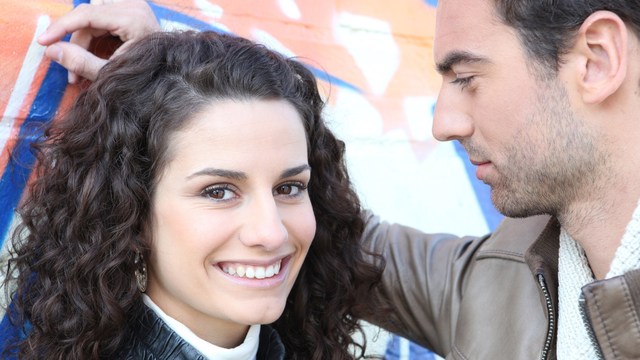 Auremar/PhotoSpin
Auremar/PhotoSpin
The song “The Look of Love” was famous in 1967, however the difference between the look of love and lust was not really explored back then. Researchers from University of Chicago have studied what makes those two gazes different, and published their results in the journal of Physical Science.
Researchers had male and female students, recruited from the University of Geneva, participate in a two-part experiment. Both parts of the experiment had students view black and white photos on a computer screen.
In part one, the students looked at photos of heterosexual couples looking or interacting with each other. In part two, the students looked at photos of attractive individuals of the opposite sex looking directly at the camera lens.
There was no nudity in any of the photos.
In both experiments, students were asked to identify as quickly and accurately as possible whether the photo elicited a feeling of romantic love or sexual desire.
The study did not find a significant difference in the time it took subjects to identify romantic love versus sexual desire. Researchers interpreted this as a measure of how quickly the brain can process both emotions.
However, an analysis of the eye tracking showed marked differences in their pattern based on whether they had indicated the photo elicited romantic love versus sexual desire.
People who stated the photo elicited a feeling of romantic love tended to fixate on the faces. If the image evoked a feeling of sexual desire, the student’s eyes moved from the face to fixate on the rest of the body.
What is interesting is how quickly -- in less than a second -- the brain is able to make this judgment, which is translated into different gazing patterns.
Additionally, the person is unaware that they look at others differently, depending on that emotion.
"Our results show that a person’s eye gaze shifts as a function of his or her goal (love vs. lust) when looking at a visual stimulus. Such identification of distinct visual patterns for love and lust could have theoretical and clinical importance in couples therapy when these two phenomena are difficult to disentangle from one another on the basis of patients' self-reports," the researchers noted in the study abstract.
Sources:
Researchers detect love and lust through eye movements. Medicalnewstoday.com.
Retrieved August 17, 2014.
http://www.medicalnewstoday.com/articles/279860.php
Eye movements reveal difference between love and lust." ScienceDaily.com, 17 July 2014. Retrieved August 17, 2014.
http://www.sciencedaily.com/releases/2014/07/140717124530.htm
Journal Reference:
M. Bolmont et al. Love Is in the Gaze: An Eye-Tracking Study of Love and Sexual Desire. Psychological Science, 2014; DOI: 10.1177/0956797614539706.
http://pss.sagepub.com/content/early/2014/07/15/0956797614539706
Michele is an R.N. freelance writer with a special interest in woman’s healthcare and quality of care issues. Other articles by Michele are at http://contributor.yahoo.com/user/499625/michele_blacksberg.html
Edited by Jody Smith




Add a CommentComments
There are no comments yet. Be the first one and get the conversation started!